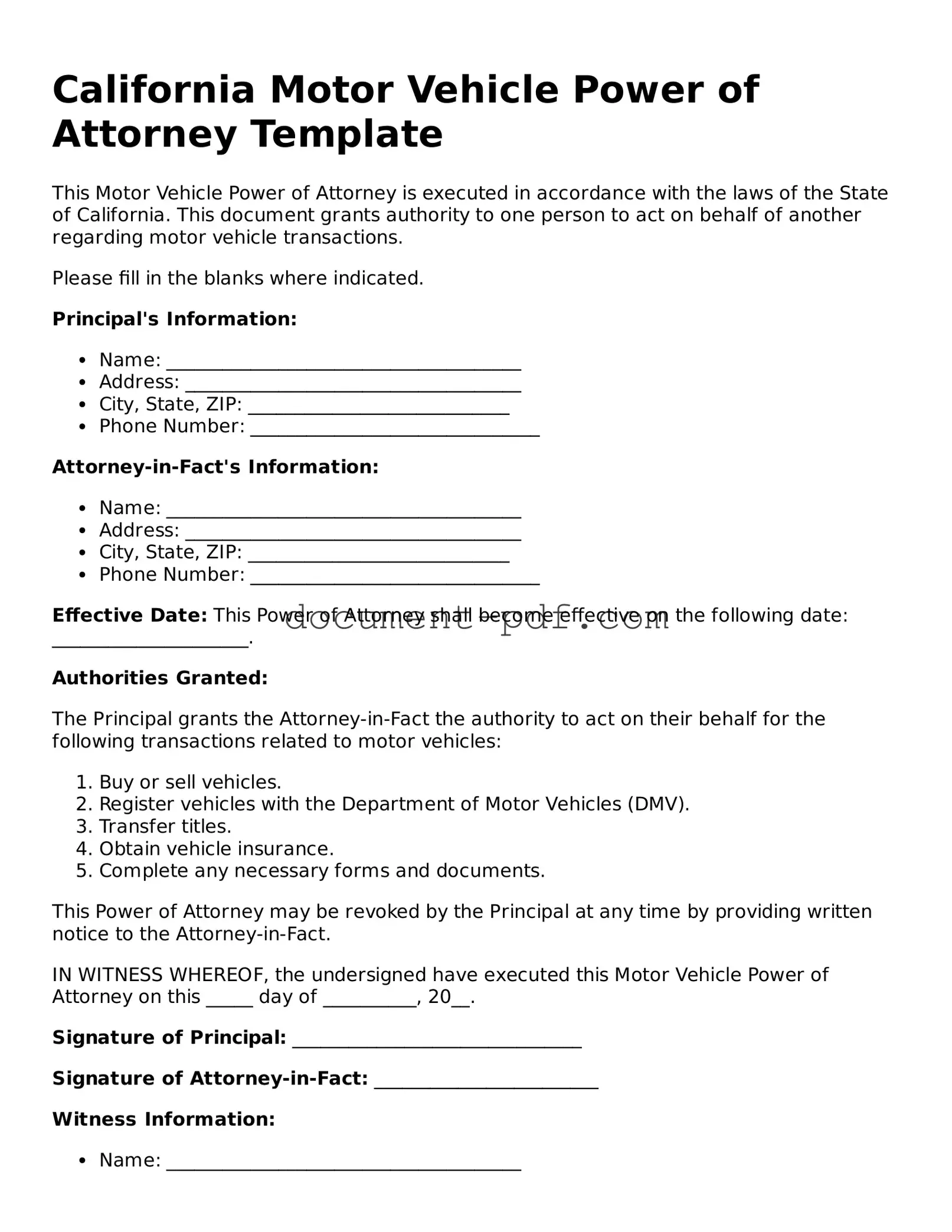California Motor Vehicle Power of Attorney Template
This Motor Vehicle Power of Attorney is executed in accordance with the laws of the State of California. This document grants authority to one person to act on behalf of another regarding motor vehicle transactions.
Please fill in the blanks where indicated.
Principal's Information:
- Name: ______________________________________
- Address: ____________________________________
- City, State, ZIP: ____________________________
- Phone Number: _______________________________
Attorney-in-Fact's Information:
- Name: ______________________________________
- Address: ____________________________________
- City, State, ZIP: ____________________________
- Phone Number: _______________________________
Effective Date: This Power of Attorney shall become effective on the following date: _____________________.
Authorities Granted:
The Principal grants the Attorney-in-Fact the authority to act on their behalf for the following transactions related to motor vehicles:
- Buy or sell vehicles.
- Register vehicles with the Department of Motor Vehicles (DMV).
- Transfer titles.
- Obtain vehicle insurance.
- Complete any necessary forms and documents.
This Power of Attorney may be revoked by the Principal at any time by providing written notice to the Attorney-in-Fact.
IN WITNESS WHEREOF, the undersigned have executed this Motor Vehicle Power of Attorney on this _____ day of __________, 20__.
Signature of Principal: _______________________________
Signature of Attorney-in-Fact: ________________________
Witness Information:
- Name: ______________________________________
- Address: ____________________________________
- Signature: ___________________________________
This template is intended to be a guideline. It’s advisable to consult with a legal professional for any personalized needs or complicated situations.
